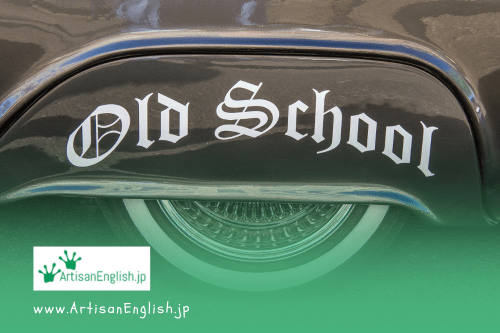
YouTube / iTunes / Spotify / Radio Public / Pocket Casts / Google Podcasts / Breaker / Overcast
Listen to ArtisanEnglish.jp posts & lesson intros here.
Word of the Day: Old school
The term old school has become popular in modern conversations, often used to describe something classic or traditional.
You don’t have to be old to be old school.
At its core, calling someone old school means they have an attitude or style that harkens back to earlier times.
It often implies a sense of nostalgia for practices or values that may seem outdated but are still appreciated.
In today’s world, old school applies to various aspects of life, from music and fashion to education and sports.
For example, many people enjoy listening to old school rock and roll on records, which showcases the musical styles of past decades.
This old school technology carries a certain charm and authenticity that resonates with listeners, who appreciate its rich sound.
In fashion, old school styles are making a comeback.
Vintage clothing is becoming popular again, as people want to express themselves through unique, classic pieces rather than fast fashion.
Wearing old school garments allows individuals to showcase their personality while paying homage to timeless trends.
In the classroom, teaching methods can also be described as old school.
Some educators prefer traditional approaches, like lectures and written assignments, over modern technology-based learning.
Many parents appreciate this old school method because it is the way they were taught, and they believe it fosters a strong foundation in subjects.
Being old school is a personal choice.
Old school embodies a rich history and love for the past.
Whether through music, fashion, or education, embracing old school elements can add depth and character to our lives.
It’s a way of honouring traditions while still enjoying the present.
Flesch-Kincaid Readability Test
This post is understandable by someone with at least a 9th-grade education (age 15).
On the Flesch-Kincaid reading-ease test, this post scores 56.
The easier a passage is to read, the higher the score on a scale of 0 – 100.

